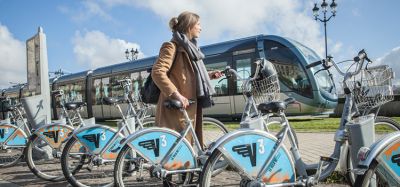MaaS disrupts the mobility market but where can money be made?
- Like
- Digg
- Del
- Tumblr
- VKontakte
- Buffer
- Love This
- Odnoklassniki
- Meneame
- Blogger
- Amazon
- Yahoo Mail
- Gmail
- AOL
- Newsvine
- HackerNews
- Evernote
- MySpace
- Mail.ru
- Viadeo
- Line
- Comments
- Yummly
- SMS
- Viber
- Telegram
- Subscribe
- Skype
- Facebook Messenger
- Kakao
- LiveJournal
- Yammer
- Edgar
- Fintel
- Mix
- Instapaper
- Copy Link
Posted: 13 April 2017 | Markku Tinnilä - Aalto University School of Business in Finland, Sampo Hietanen - MaaS Global | No comments yet
For a long time the use of private cars has fulfilled the dream of freedom of mobility. Due to several factors, this status quo is rapidly changing toward using services rather than owning a vehicle. Here, Sampo Hietanen, CEO of MaaS Global and Markku Tinnilä, Adjunct Professor at Finland’s Aalto University School of Business, explore how to fulfil the dream of seamless mobility without owning the means.


Among the reasons for our changing mobility habits are urbanisation, congestion, changing lifestyles, and – perhaps most importantly – people’s attitudes toward owning versus using. These changes also drive other types of servitisation, such as Airbnb providing a means to benefit from an underused resource such as unoccupied apartments.
It is no wonder then that MaaS (Mobility as a Service) has received a lot of attention by promising to fulfil the dream of seamless mobility without the bother of ownership. The ability to use the optimum transport means in an easy way is the key issue. Consequently, MaaS should be regarded from the users’ viewpoint, i.e. fulfilling the freedom of mobility, rather than from an operational viewpoint of the increasing utilisation rate of transport vehicles. The latter has traditionally been the driving force behind planning, scheduling and providing transport services.
Users see the mobility market as one entity providing different types of solutions to differing needs, while transport service providers seem to regard the market as separate silos. Consequently, they focus on their own services as the core, and supplement with other transport modes and services. However, considering the wide range of mobility needs from single person point-to-point services, and up to mass transports, it is obvious that no single player can fulfil all such needs alone. It may even be difficult for a single platform to provide all the requisite services. Accordingly, the traditional idea of the platform operator being the dominant player is clearly not the right one – a multitudinous market cannot be controlled by just one player, be it Google, or that of a major car manufacturer.
Why do we need a car to fulfil our dream of mobility?
The answer lies partly with the flexibility that cars provide. It can be used for endless purposes: from daily trips; to holidays; for driving alone to work; transporting goods from the mall – the list goes on. So far, the mobility services have been unable to provide a satisfactory solution for the typical variety of needs, such as:
- The need to drive now – needing to have instant access to transport
- Planned but on the same day, such as a visit to Ikea
- A weekend trip
- Transportation over a longer length of time.
How can mobility services fulfil these needs? The answer is that some are easier to cater for than others. Station-based car-sharing with pre-reservations partly fulfil the short-term needs, while flexible car rentals provide the others. Car ‘leasing’ can fulfil the longer-term needs, but requires more flexibility than the current multi-year contracts. In order to compete with private cars, we need to provide convenience – the same kind of convenience that goes with a car parked outside our homes – and the knowledge that it really is available.
Therefore, in terms of the value offering of MaaS, the key issue is availability. If there is any doubt that we will get the mobility service when we need it, the services will fail. It is therefore the responsibility of the MaaS operator to guarantee this service promise – and at a reasonable price.
Where is the money?
The simple answer is that the consumers have the money! But is this not the case for all businesses? In terms of mobility services, the key change comes from investing in services, as opposed to that of vehicles. This radically changes the use of consumers’ money and consequently, the mobility business in general.
The lure of the MaaS market lies in the fact that a city dweller who owns a car uses several thousand euros a year to fulfil their transport needs. Most of these costs are connected to running the car and its depreciation in value. Additionally, the annual cost of public transport can easily reach €1,000. When this figure is multiplied by the number of potential customers, this demonstrates a major change in the mobility market, and a shift from investing in vehicle ownership to just using them.
Who will get the money? The prevalent thinking is that the platform owner, i.e. the MaaS operator, will get a major share, in addition to controlling the game. However, a large share of the costs will be divided among other players. If we assume a monthly fee of €300, the share of the Maas operator may be €50, and would realise in purchase of transport services from other players with €250. This means a large increase in the utilisation of services of transport, rather than owning vehicles and using them. This reflects the type of growth in using services that has been seen in other sectors.
A good example is that of Helsinki. It is a ‘standard’ one-million-population city with both private cars and public transport use; buses, local rail, trams and even metro. It has congested ring roads and main thorough fares. Under the assumption that 50,000 daily users pay €45 for short-term car rental, this would mean €2.5 million per day.
How will the users divide the €250 used for mobility services? In the case of Helsinki, the average number of trips is 3.3/per day with a mean length of 6.7km. How many of these will be made by using mass public transport, demand responsive transport (DRT), taxis, rented or shared cars? The re-division of modal use will affect the mobility market. The recent experiences of the MaaS service ‘Whim’ in Helsinki, show 97% use of public transport, 7% taxi and 2% rental services. This division reflects the early stage of service range.
There are different needs for different journeys, such as daily trips where the main mode will be basic routes of mass transport. However, other needs still lack adequate types of services to replace the void left by private cars: these grey areas that lack solutions include how to transport goods from Ikea, and how to organise point-to-point transport in a cheaper way. Solutions such as DRT or car-sharing have been introduced years ago, but still lack sufficient service levels.
Where to make money: multiple positions provide value
How to position oneself and succeed in the future mobility markets? The key position of the operator is not the only one for success. There are also other positions of service operators and providers that can be profitable. For example, a taxi company can participate in the MaaS ecosystem and sell its services in larger blocks to the MaaS operator, and still maintain its own direct-to-customer sales. Joining MaaS would create a safe financial basis for their operations. A taxi company could also offer novel services, such as a flat rate in city centres, with its own risk. The information about customer needs would be owned by the taxi company for its own benefit. This creates a foundation for new services and boosts the brand.
Challenges – who owns the brand and customer?
One of the fears of mobility service providers, with regard to MaaS, is that of losing their own brand, and falling into the ‘white label’ class. However, looking at other branches of business, we can see that although the grocery market is dominated by large players, individual food brands are still strong. The white labels have a share, but do not dominate the business.
A connected key issue is that of the money-making position. Does only the MaaS operator make money and control the network or ecosystem? And do all other providers fall into secondary positions? If service providers and operators take risks and create new services, there is no incentive for the MaaS operator to create its own service. The first-comer advantage also applies in this market, and as there is clearly a need for novel services to cover the grey areas – possibilities to gain a key position are entirely possible.
Plugability – the key in future ecosystems
Plugability rules – the ability to plug into several ecosystems – has become a key issue. It reduces the risk of joining the wrong networks, as we can easily connect our service to other ecosystems. Also, plugability makes exclusive silos less advantageous. As seen from the figure below, there are a large range of services connected to MaaS, and for service providers the key is the ability to connect to many ecosystems, rather than being tied to just one.
Many promising mobility services have been started with the idea of providing ‘all’ the services a customer needs via a single service platform. The structure typically consists of a group of services provided exclusively to the network, and the users must connect to the network by keeping a separate purse for payments, or an exclusive mobile app for ordering services. The challenge with these types of innovations is that from a customer viewpoint they provide for some needs, but not all. They thus remain niche solutions and are suitable only for specific groups, such as elderly people. A proper MaaS service needs to provide a large range of services, as a minimum requisite, in suitable bundles – or not at all. Plugable services fit into this concept by extending the service range of several service ecosystems.
Mobility and consumer money – how much does a car actually cost?
According to statistics, an average European travels 12,869km per year, 74% of which is in a private vehicle. The average spending is between 11-13% of household income, answering in EU-15 approximately €175/month/head. Among car owners, transportation spending is much higher than average, as owning and using a car costs €400-800 per month in Europe.
Today, transportation services constitute only 16% of a household’s spending on transport – the remainder goes to the purchase and operation of a private vehicle.
The tricky thing is that the majority of the cost of owning a car is hidden, as ownership costs such as financing, insurance, depreciation, etc. form a large part of the annual cost of €5,000. And this for a car that is parked around 96% of the time – so usage is actually only 4% of time.
Biographies




Related topics
Multimodality, Transport Governance & Policy
Issue
Issue 2 2017
Related organisations
MaaS Global
Related people
Markku Tinnilä, Sampo Hietanen







